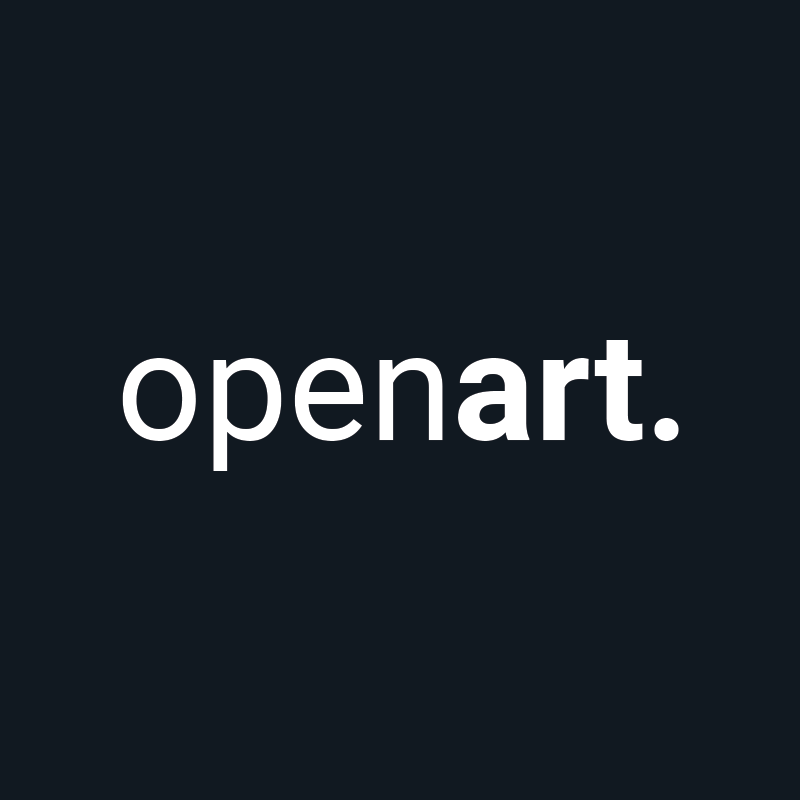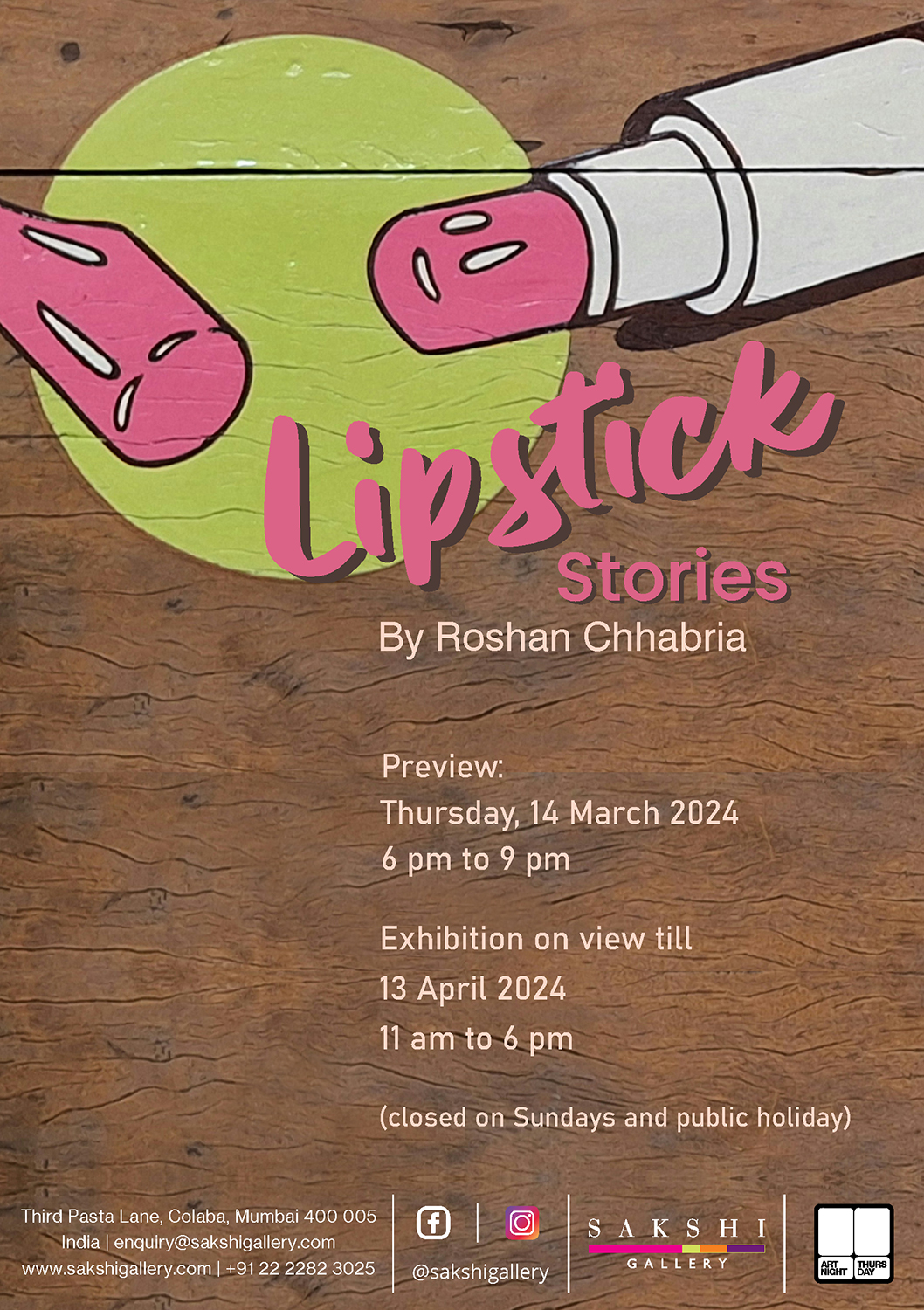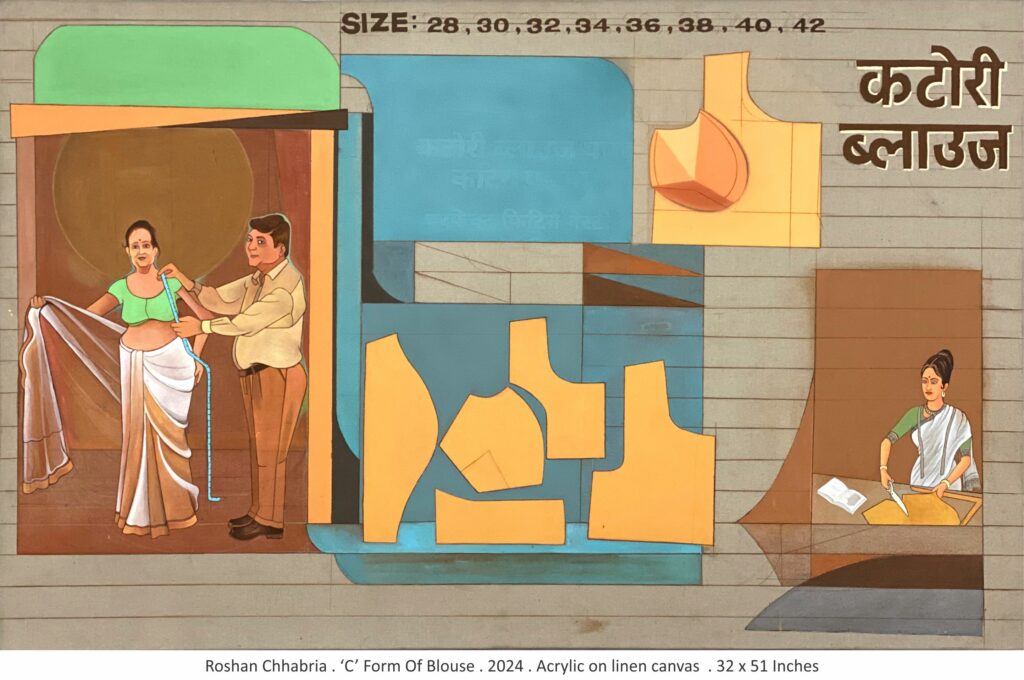
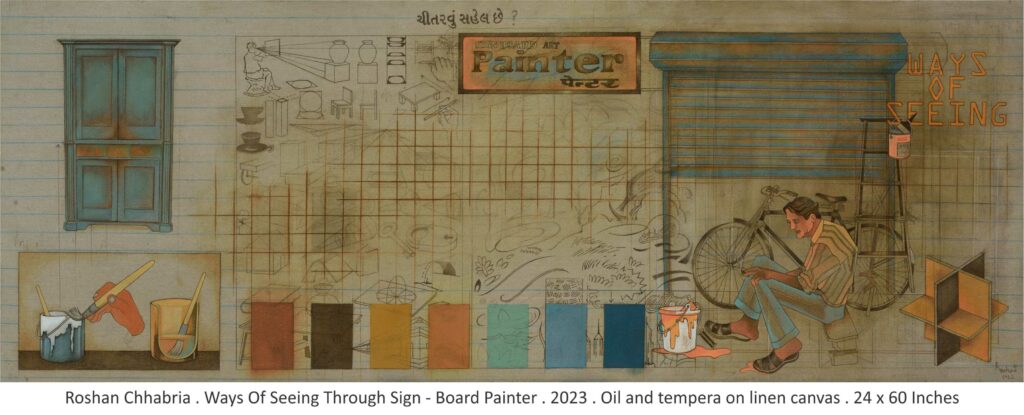
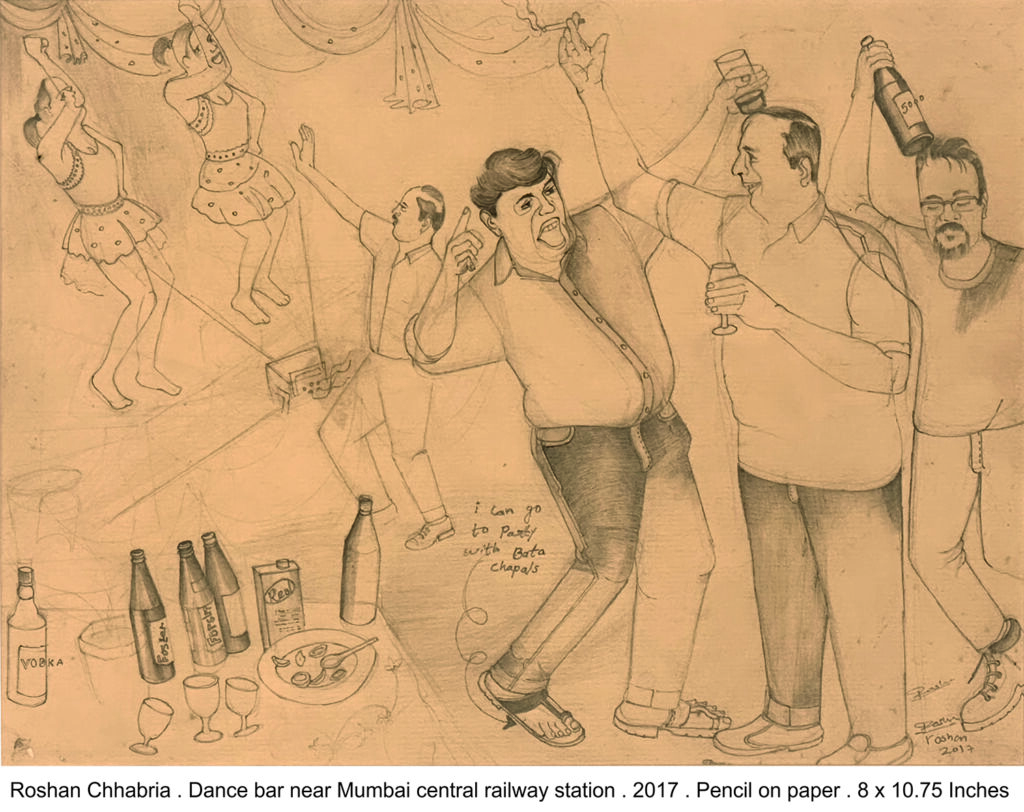
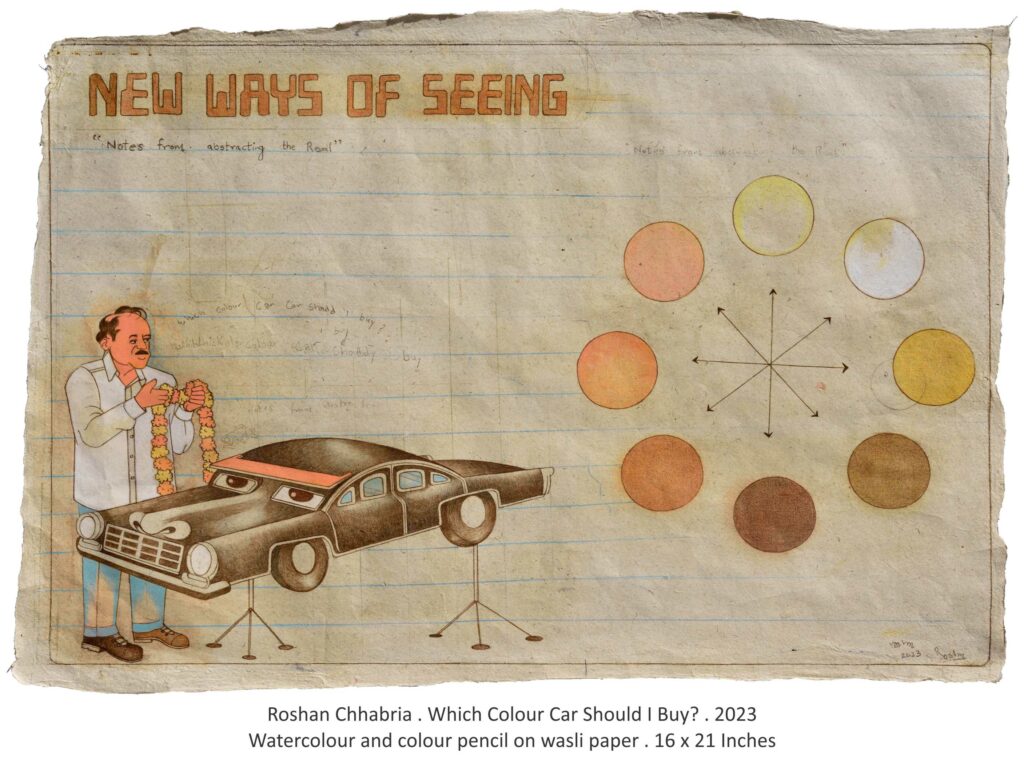
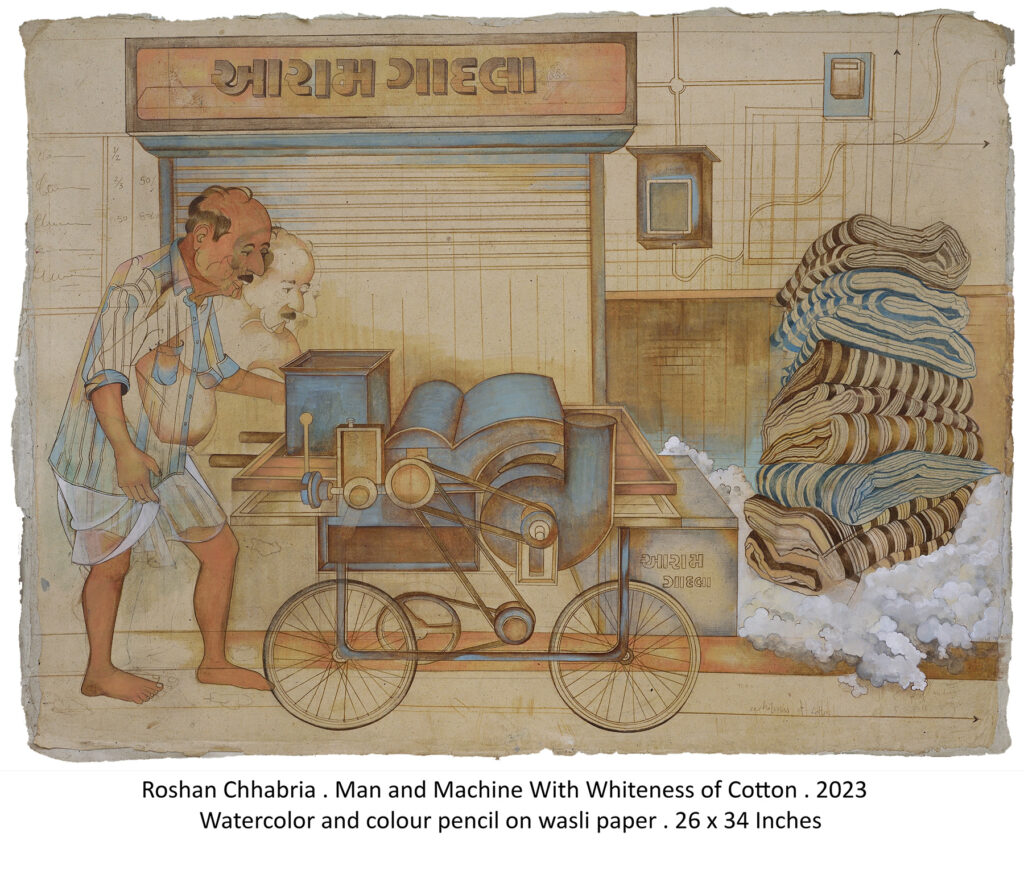
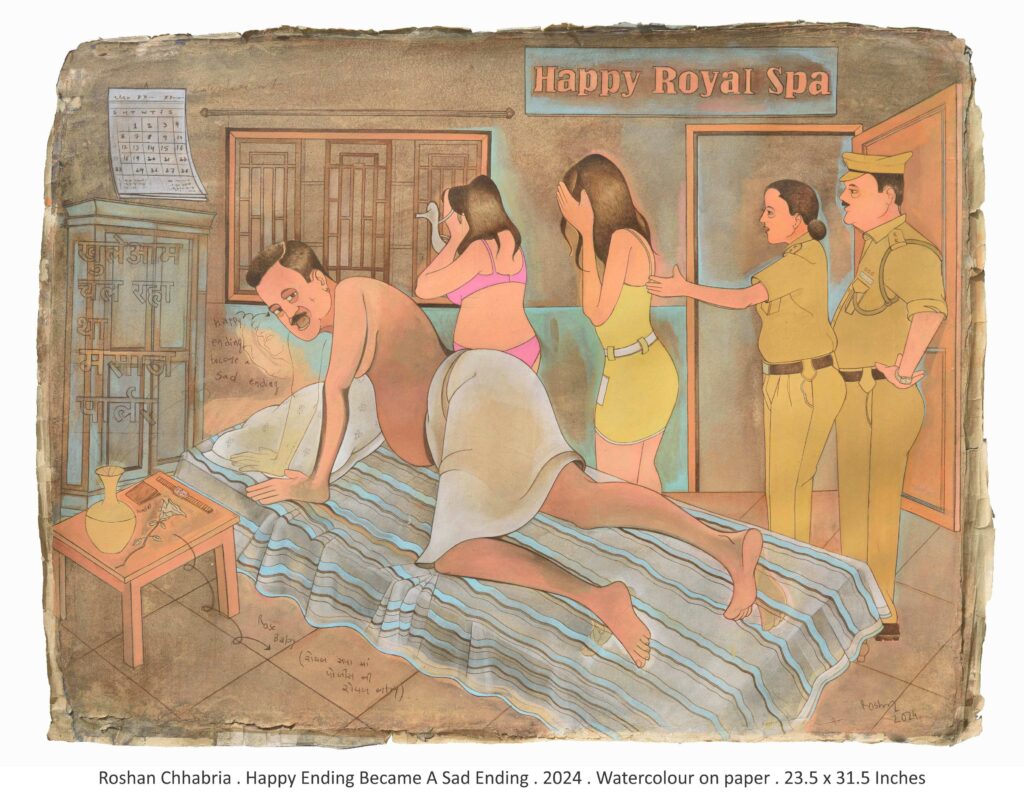
Preview
Thursday, 14 March 2024
6 pm to 9 pm
Exhibition on view till 13 April 2024
11 am to 6 pm
I am intrigued by the mundane everyday lives of the Indian middle class. Coming from a middle-class Sindhi household myself, I have confronted various societal expectations. These experiences have
informed my practice, as have my observations of other middle-class people, their family situations, and aspirations.
To express my preoccupations, I use visual references of illustrations from the so-called locally published cheap books, women’s magazines, newspapers, local signboards, texts from religious/educational and secular posters, found objects, readymades, popular products, and so on. My peculiar style of drawing has a tentative quality, yet at the same time, it questions the notion of so-called aesthetics or the “good.”
I often intersperse my work with text, both borrowed and my own. The deliberate misspellings and inconsistent conjugations suggest that the joke is on the middle class and not on the economically more secure English-speaking community.
While my work is characterised by such humorous representations of the subject, the dilemma and helplessness I face in real life are not necessarily so. I, however, aim to portray my protagonists without stripping their middle-class sensibility, concerns, and, at times, garishness, which adds to the humor. So, even when my protagonist is an elite woman, I portray her through “middle-class eyes.”
My typical display is a cluttered arrangement of works, texts, found objects, and readymades that I find relevant. They can be on the wall or the floor, somewhat akin to objects displayed in a flea market. I can also have a formalistic approach and let my formalistic concerns develop into the work itself.
My works are influenced by Bhupen Khakhar, Robert Rauschenberg, Richard Hamilton, and Raoul Hausmann. Popular culture, consumerism, and stereotypes have also played a significant role in my practice.
As Ryan Holmberg wrote about my work, “…overtly good kids act like funny automatons that led Chhabria to dovetail the trope of “ideal boy” with a Dada-inflected parody of Indian consumerism… Chhabria’s framing of Pop as an extension of Dada reflects a keen understanding of art history; it also reflects social conditions in India.”
About Sakshi Gallery
Since 1986, Sakshi Gallery has developed a strong repertoire of Indian and International artists and continues introducing and supporting emerging Indian artists.
Sakshi Gallery with a sprawling space of 3000 sq ft spread over two floors is one of the premier galleries of India and is located in the heart of Mumbai’s art district in Colaba.
Sakshi Gallery has showcased landmark exhibitions of Indian art all over the world, representing important Indian artists like Rekha Rodwittiya, Surendran Nair, Jehangir Sabavala, Manjit Bawa, Manjunath Kamath and others. It has endeavored to develop a strong program, working closely with important Indian and international artists as well as introducing many emerging ones. It has held exhibitions of Indian art all over the world and has introduced to the Indian audience work of illustrious international artists such as El Anatsui, Gregory Crewdson and Julian Opie.
